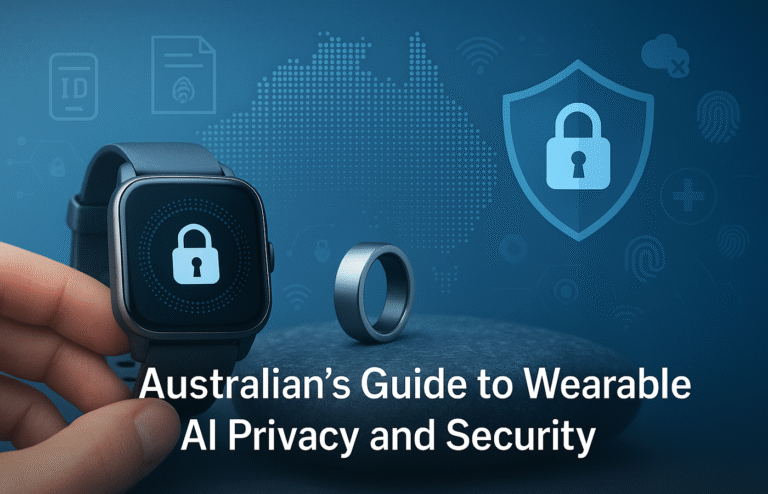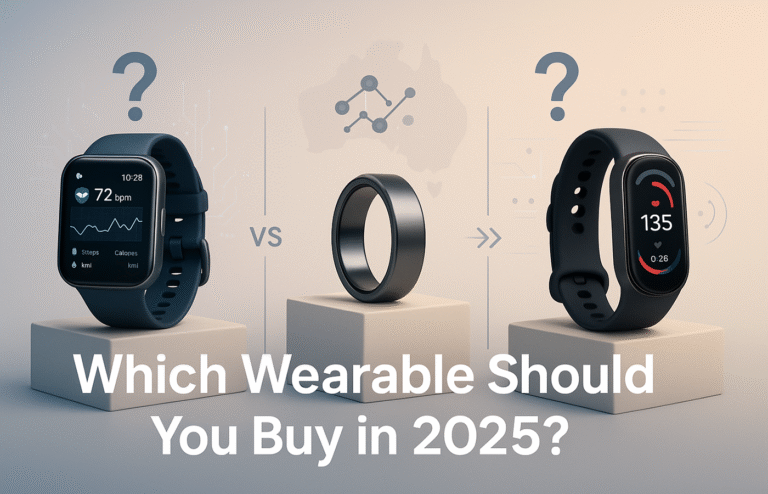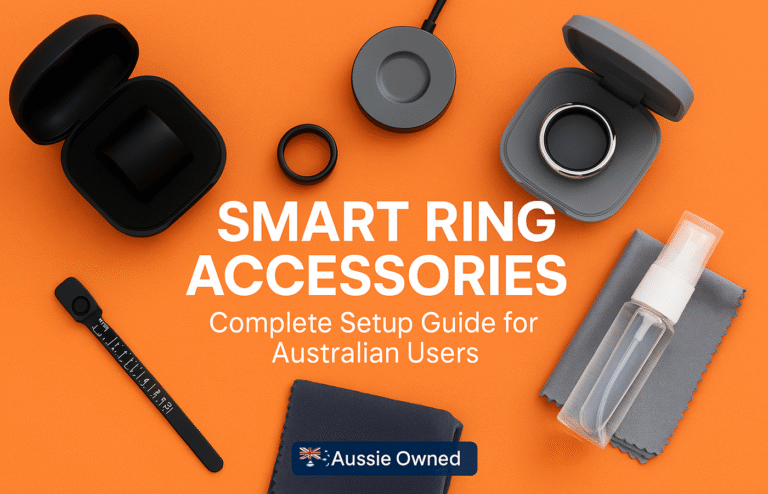Wearable Health Tracking 101: Decoding Your Data for Better Wellbeing
Understanding wearable health metrics transforms overwhelming data streams into valuable wellbeing insights without requiring medical expertise, focusing on personal trends rather than absolute numbers.
Key Metrics Explained:
● Heart rate zones guide exercise intensity from recovery (50-60%) to maximum effort (90-100%)
● Sleep stages including light, deep, and REM sleep with quality mattering more than quantity
● Activity tracking beyond steps including active minutes and automatic exercise recognition
● Stress indicators using heart rate variability and breathing patterns for wellness monitoring
Personal Baseline Importance:
● Individual variations due to age, fitness, genetics, and medications make personal trends more meaningful than comparisons
● Seasonal fluctuations and illness recovery significantly impact baseline measurements
● Weekly and monthly averages provide better insights than daily fluctuations
Practical Applications:
● Sleep optimisation through pattern identification and environmental adjustments
● Exercise planning based on recovery metrics and stress readings
● Healthcare integration with Australian providers increasingly recognising patient-generated data value
Success Strategy: Focus on one or two metrics initially, treat data as self-awareness tools rather than judgement, and maintain realistic accuracy expectations.
Wearable Health Tracking 101: Decoding Your Data for Better Wellbeing
Your smartwatch buzzes with another notification. Heart rate: 78 bpm. Sleep score: 82%. Stress level: moderate. But what do these numbers actually mean for your health? If you’re new to wearable health tracking, the constant stream of data can feel overwhelming rather than empowering.
Understanding your wearable’s health metrics doesn’t require a medical degree. However, knowing how to interpret these measurements can transform random numbers into valuable insights about your wellbeing. Let’s break down the key health metrics your device tracks and what they’re really telling you about your body.
Heart Rate: Your Body’s Engine Speed
Heart rate monitoring forms the foundation of most wearable health tracking. Your device measures beats per minute (bpm) throughout the day, creating a detailed picture of how your cardiovascular system responds to different activities and stressors.
Resting heart rate represents your baseline when you’re completely relaxed. For most adults, normal resting heart rates range between 60-100 bpm, though athletes often have lower rates due to improved cardiovascular efficiency. More importantly, tracking changes in your resting heart rate over time can signal improvements in fitness or potential health issues.
Heart rate zones help you understand exercise intensity. These zones, typically expressed as percentages of your maximum heart rate, include:
- Zone 1 (50-60%): Active recovery and warm-up
- Zone 2 (60-70%): Aerobic base building and fat burning
- Zone 3 (70-80%): Aerobic fitness development
- Zone 4 (80-90%): Lactate threshold training
- Zone 5 (90-100%): Maximum effort and power development
Rather than obsessing over staying in specific zones, focus on how your heart rate responds to consistent activities. Gradually improving recovery times and lower heart rates during similar exercises indicate growing fitness levels.
Heart rate variability (HRV) measures the tiny variations between heartbeats. Contrary to intuition, higher variability generally indicates better health and stress resilience. However, HRV varies significantly between individuals, making personal trends more meaningful than absolute numbers.
Sleep Tracking: Understanding Your Nightly Recovery
Sleep metrics provide insights into one of your body’s most critical recovery processes. Modern wearables track sleep stages using movement sensors and heart rate data, though they’re not as accurate as clinical sleep studies.
Sleep stages include light sleep, deep sleep, and REM (Rapid Eye Movement) sleep. Light sleep typically comprises 50-60% of total sleep time and helps with memory consolidation. Deep sleep, accounting for 15-20% of sleep, supports physical recovery and immune function. REM sleep, making up 20-25% of sleep time, aids emotional processing and creativity.
Sleep duration recommendations vary by age, but most adults need 7-9 hours nightly. However, sleep quality often matters more than quantity. Consistent bedtimes, minimal interruptions, and appropriate time in each sleep stage contribute to feeling refreshed.
Sleep scores combine various metrics into a single number, typically ranging from 0-100. These scores consider duration, efficiency (time asleep versus time in bed), and time spent in different stages. While convenient, don’t become fixated on achieving perfect scores. Instead, notice patterns and how sleep quality affects your daily energy and mood.
Activity and Movement: Beyond Step Counting
Step counting introduced many people to activity tracking, but modern wearables measure much more comprehensive movement data.
Daily steps provide a simple baseline for activity levels. While 10,000 steps became popular through marketing rather than science, research suggests 7,000-8,000 daily steps offer significant health benefits for most people. Focus on gradually increasing your baseline rather than achieving arbitrary targets.
Active minutes measure time spent in moderate to vigorous activity. The Australian Department of Health recommends at least 150 minutes of moderate-intensity activity weekly, which wearables help track automatically.
Exercise recognition automatically detects activities like walking, running, cycling, or swimming. These features improve accuracy by applying appropriate algorithms for different movement patterns. However, don’t rely entirely on automatic detection for structured workouts—manually starting exercise modes ensures better data quality.
Recovery metrics indicate when your body needs rest versus when it’s ready for intense activity. These combine heart rate variability, sleep quality, and recent exercise stress to suggest optimal training loads.
Stress and Wellness Indicators
Stress tracking represents one of the most valuable yet misunderstood features of modern wearables. These devices use heart rate variability, breathing patterns, and sometimes skin temperature to estimate stress levels.
Stress scores typically range from low to high, with some devices providing numerical scales. Remember that not all stress is negative—exercise, exciting activities, and even positive challenges can register as “stress” on your device.
Breathing reminders prompt you to take mindful breathing breaks when elevated stress is detected. These guided breathing exercises can genuinely help activate your parasympathetic nervous system, promoting relaxation and recovery.
Body battery or energy levels estimate your available energy throughout the day. These metrics combine sleep quality, stress levels, and recent activity to predict when you’ll feel energised or depleted.
Understanding Normal Ranges and Personal Baselines
Health metrics vary enormously between individuals due to age, fitness level, genetics, medications, and underlying health conditions. Rather than comparing your numbers to others, focus on establishing your personal baseline and tracking changes over time.
Seasonal variations affect many metrics. Sleep patterns often change with daylight hours, while activity levels may fluctuate with weather. Recognise these natural variations rather than worrying about temporary changes.
Illness and recovery significantly impact wearable metrics. Elevated resting heart rate, disrupted sleep, and unusual stress readings often precede or accompany illness symptoms. Some users report their wearables detecting illness before they felt symptoms.
Medication effects can alter heart rate, sleep patterns, and other metrics. If you start new medications, expect potential changes in your baseline measurements.
Practical Applications for Daily Life
Transform your wearable data into actionable insights by focusing on trends rather than individual measurements. Weekly and monthly averages provide more meaningful information than daily fluctuations.
Sleep optimisation becomes easier when you identify patterns. Notice how caffeine timing, screen exposure, room temperature, or stress levels affect your sleep quality. Experiment with small changes and observe the results over several weeks.
Exercise planning improves when you understand your body’s recovery patterns. If your wearable suggests high stress or poor recovery, consider lighter activities or rest days. Conversely, when metrics indicate good recovery, you might push harder during workouts.
Stress management benefits from recognising your stress triggers and recovery strategies. Notice what situations, times of day, or activities consistently elevate your stress readings, then develop targeted coping strategies.
When to Consult Healthcare Professionals
Wearable devices excel at tracking trends and encouraging healthy behaviours, but they’re not medical diagnostic tools. Several situations warrant professional consultation:
Persistent unusual readings that don’t align with how you feel deserve medical attention. This includes consistently elevated resting heart rate, unusual heart rhythm patterns, or dramatic changes in sleep patterns without obvious causes.
Concerning symptoms combined with unusual wearable data require professional evaluation. Don’t ignore chest pain, shortness of breath, or severe fatigue, even if your device readings seem normal.
Chronic conditions benefit from professional guidance on interpreting wearable data. Healthcare providers can help you understand which metrics are most relevant for your specific situation and how to use the data constructively.
Integrating with Australia’s Healthcare System
Australia’s healthcare system increasingly recognises the value of patient-generated health data. Many general practitioners welcome wearable data when it provides useful context for your health concerns.
Preparing for appointments becomes more effective when you can show trends rather than just describing symptoms. Export relevant data graphs covering 2-4 weeks before your appointment.
Privacy considerations remain important when sharing health data. Understand your device’s data sharing policies and control who has access to your information.
Medicare and private health insurance don’t typically cover wearable devices, though some private insurers offer incentives for healthy behaviours tracked through wearables.
Avoiding Data Obsession
While wearable health tracking offers valuable insights, maintaining a healthy relationship with your data prevents anxiety and obsessive behaviours.
Set realistic expectations about accuracy. Consumer wearables provide useful trends but aren’t medical-grade devices. Accept that occasional inaccurate readings are normal.
Focus on long-term trends rather than daily fluctuations. One poor sleep score or elevated stress reading doesn’t indicate health problems—look for patterns over weeks or months.
Take regular breaks from intense data monitoring. Some users benefit from periodic “data detox” days where they ignore their metrics and focus on how they actually feel.
Making Wearable Data Work for You
Successful wearable health tracking requires treating the data as a tool for self-awareness rather than a judge of your worth. Your numbers don’t define your health—they simply provide additional information to complement how you feel and what you observe about your body.
Start by identifying one or two metrics that interest you most, whether that’s improving sleep quality, increasing daily activity, or managing stress better. Focus on understanding those measurements deeply before expanding to other metrics.
Remember that the best wearable health tracker is one you’ll actually use consistently. Choose a device that fits your lifestyle, budget, and health goals, then commit to learning from the data it provides rather than being overwhelmed by it.
Your wearable device offers a fascinating window into your body’s daily rhythms and responses. By understanding what the numbers mean and how to interpret them appropriately, you’ll be better equipped to make informed decisions about your health and wellbeing.







